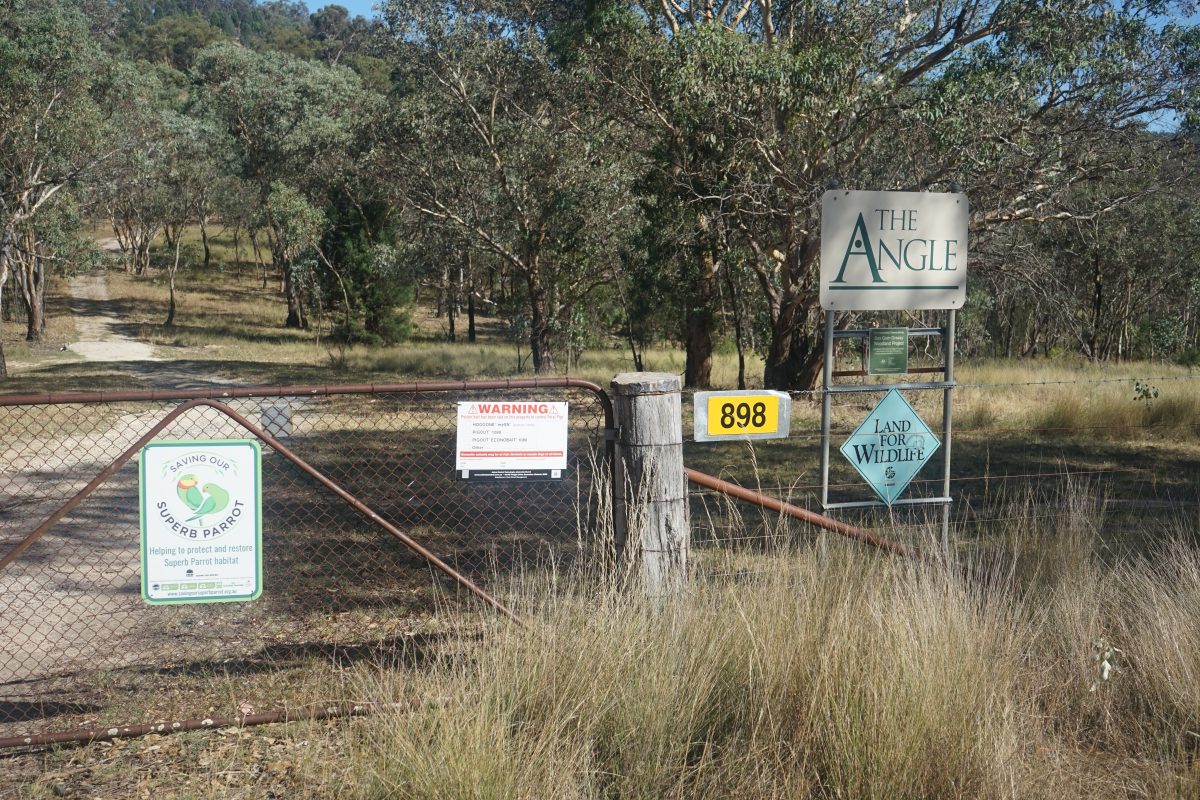
Ecologist Mick Callan heads towards the nesting box high among branches of a river red gum to check on any new arrivals. Photo: Clare McCabe.
Squirrel gliders, once feared threatened by predators, are thriving in a special habitat at The Angle, near Bigga, thanks to new nesting boxes – and a passion by local farmers to care for their environment.
Last year, the not-for-profit Kanangra-Boyd to Wyangala Wildlife Corridor (K2W Link), in an environmental project supported by the International Fund for Animal Welfare, installed 10 nesting boxes near the Lachlan River at The Angle.
(The K2W is a collection of landholders, communities and groups who have been working since 2012 to reconnect wildlife with natural resources – using environmental corridors.)
The plan was for the boxes to provide additional homes for birds and animals dependent on a hollow environment for their safety. They would be monitored and this work would provide valuable insight into their ongoing management, especially in view of growing concerns that one of the populations, the squirrel glider, was on the decline.
Early last month, Habitech modular nesting boxes were installed around the K2W Link as part of the plan to check on the health and population of the gliders.
In late February, Habitat Innovation and Management ecologists Carl Tippler and Mick Callan monitored the nesting boxes with footage from nearby wildlife camera traps and checked another 20 nesting boxes nearby at Bigga, Tuena and Peelwood before installing another nine boxes and more cameras.

Ecologists were delighted to discover these new residents in one of the nesting boxes. Photo: Supplied.
Mr Callan said they couldn’t have been more pleased with what they uncovered.
“There were very high rates of usage of the boxes with some of the properties in excess of 80 per cent,” he said.
“A broad range of fauna was recorded using the Habitech nest boxes, including brushtail possums, Krefft’s gliders, squirrel gliders, ringtail possums and lots of evidence of rosella nests from the recent breeding season.”
It was also the best news for owners of the property where the nesting boxes have been installed, Sean and Brenda Proudman, who run the 121-hectare site at The Angle, working for many years to improve diversity on the farm, near the village of Bigga in the Southern Tablelands.
They are working towards reconnecting the landscape by preserving the natural habitat of the gliding possum like the river red gum. They are also keen to protect the squirrel glider by taking aim at its predators.
Mr Proudman said the site played an important role in helping to protect local wildlife. It was established after surveys for bats and birds showed that the small gliding possums were among the night-time birds present on the property.
“Brushtail possums were also discovered in two of the nesting boxes and camera footage shows a mother and baby brushtail possum using another,” he said.
“Several more had nests consistent with the nests of squirrel gliders. At one site, the footage shows a squirrel glider returning every few nights over several months.”

Signs alert visitors to the important ecological work going on at The Angle property in the Southern Tablelands. Photo: Clare McCabe.
Mr Proudman said he knew there were gliders on the property because they had been picked up in an audit of bats and night birds, “but we didn’t realise they were as plentiful as they seemed to be”.
“The gliders were investigating the new nesting boxes within a week of installing them.”
Mr Callan said the modular size of the nesting boxes meant that in areas where gliders had little uptake, other species would be targeted.
“We believe it’s likely that gliders aren’t currently present at these sites,” he said. “We intend to modify the nest boxes to make them suitable for the other species that are present.
“We are always learning, and adapting and monitoring is a big part of that.
“Understanding what is using, investigating and subsequently preying on animals that shelter in the nest boxes at each site means we can better target habitat for those species.”
K2W Link plans more nesting box installations for later this year, with support from the Australian and NSW Governments’ Bushfire Local Economic Recovery Fund.
Landholders and others interested in becoming part of the K2W, a natural highway that follows the line of the Abercrombie River between the Blue Mountains and the Wyangala Dam, can go to k2wglideways.org.au







